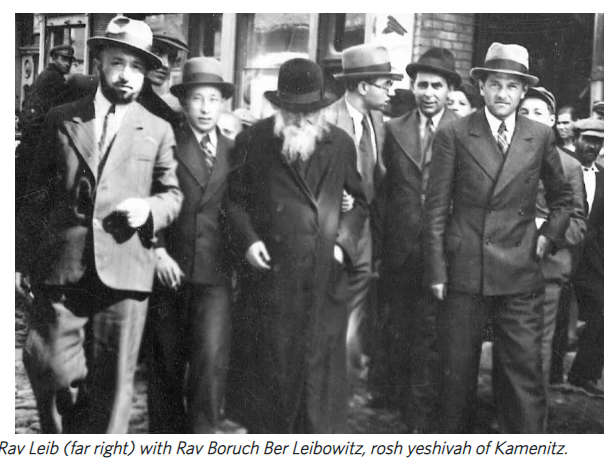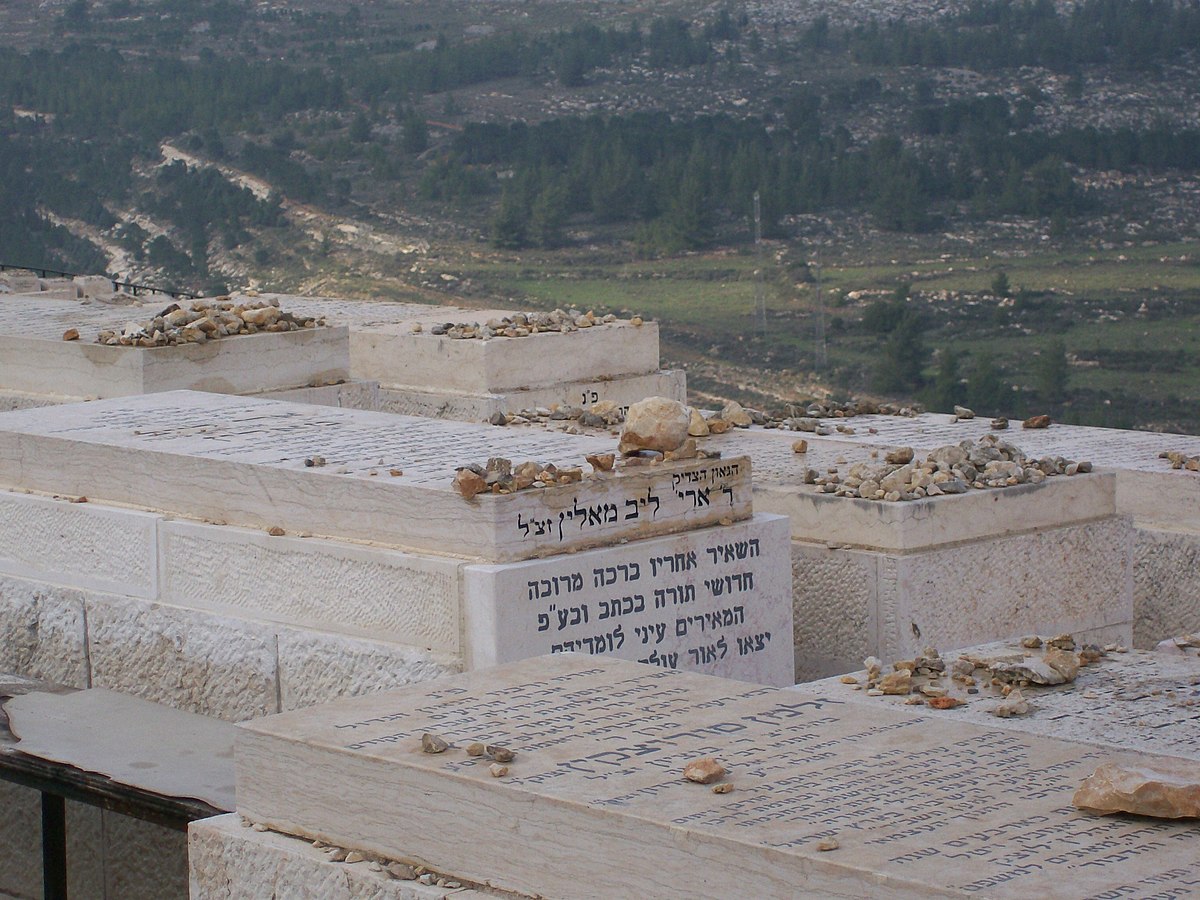Rav Aryeh Leib Malin zt"l
הרב אריה לייב בן אברהם משה מלין זצ"ל
Teves 29 , 5722
Rav Aryeh Leib Malin zt"l
Leader of the Lions: The Story of Rav Leib Malin
By Dovi Safier and Yehuda Geberer September 14, 2021
Rav Leib Malin was a young talmid in prewar Mir when he heard the words that would become his mission
It was the summer of 1940 in Lithuania. The students of the Mir Yeshivah, who had escaped from occupied Poland, were in turmoil. The Soviet takeover of the region meant that their lifeblood — Torah learning and observance — was in imminent danger. Yet a savage war was raging. How could they risk leaving their refuge and incurring the very real possibility of a punishing Siberian exile?
Then, from amid the confusion and uncertainty, emerged a voice of clarity. A small group of talmidim — bearing no official titles but accorded respect and deference by the entire yeshivah — had determined that the yeshivah could not remain in Lithuania, subject to antireligious Soviet domination. They had to escape. And they had to escape together, as a single unit.
The vision, the authority, and the tenacity behind the escape plan traced back to a talmid who was the “leader of the lions.” He was unmarried and clean-shaven and held no official position. But Rav Leib Malin had long gained renown as a leader. And with the ensuing decades, he would demonstrate his capacity to build, save, preserve, and recreate the essence of the yeshivah.
“Stand By Your Decision”
Rav Aryeh Leib Malin, widely known as “Rav Leib,” was born near Bialystok in 1906 to Rav Avraham Moshe Malin, who served as the local dayan. The Malins originated in Brisk, where Rav Leib’s ancestor, Rav Isser Yehuda Malin, was one of the town’s rabbinical leaders. Young Leib Bialystoker began to gain repute as a serious Torah scholar during his formative years in Grodno’s Shaar HaTorah Yeshivah. “Just as one breathes air, we breathe Torah in Grodno,” was the mantra during the yeshivah’s interwar golden age. It was in this environment that he quickly made a name for himself, as he gravitated toward the rosh yeshivah, Rav Shimon Shkop.
While studying in Grodno, Rav Leib and his close friend Rav Dovid Lifshitz (later the Suvalker Rav and rosh yeshivah at RIETS) approached Rav Shimon Shkop to discuss a personal matter. After a lengthy and fruitful discussion, they apologized for taking precious time that he could have otherwise spent learning. Rav Shimon countered with the statement of Chazal: “ ‘Aser bishvil she’tis’asher — Tithe your earnings [aser] so that you will become wealthy [tis’asher].’ This principle isn’t limited to monetary contributions, but includes spiritual ones as well. Thus, a rosh yeshivah who spends time with his students only gains, and will ultimately see more success with his shiurim.”
Those prescient words would later shape Rav Leib’s outlook.
Rav Leib spent some time learning in Baranovich under Rav Elchonon Wasserman, but it was in the Mir Yeshivah that he found his mandate. In the Mir, young Leib Malin found his place among the other senior talmidim — the “lions of the Mir” — eventually emerging as the leader of the lions, in keeping with his name “Leib.” And it was in the Mir as well that he grew enraptured by the rebbi who would define the rest of his life and educational approach, the great mashgiach Rav Yerucham Levovitz. His esteem for Rav Yerucham was so great that Rav Leib referred to him as “the teacher and leader of the yeshivos during the prewar time period.”
Rav Shmuel Berenbaum arrived in the Mir after Rav Yerucham’s passing, yet the reverence for the venerated Mashgiach was still palpable. He related how Rav Leib saw Rav Yerucham as such a towering figure that he was like dust before him, “to the point where had the Mashgiach instructed him to go into a fire, he would have done so!”
In Rav Yerucham’s mussar shmuessen, Rav Leib found not just ethical and educational messages, but also a derech halimud. The incisive analysis that Rav Yerucham would apply to the words of Chazal, he explained, was a lesson in how one should plumb the depths of every word of Torah.
Rav Leib was once so bothered by something that occurred in yeshivah that he felt compelled to register a mecha’ah (protest). He gathered several other bochurim, and they rose to walk out of the beis medrash to declare their disagreement. Suddenly, they caught the eye of Rav Yerucham standing at the door of the beis medrash, arms crossed and eyes flashing fire, clearly willing them to sit back down. The group backed down and returned to their seats.
Later on, Rav Yerucham called in Rav Leib. “I didn’t agree with what you wanted to do,” he said, “but you had obviously made the cheshbon and felt it was the correct decision. So why, then, did you change your mind when you saw me? If you felt that it was right, then you should have been prepared to stand by your decision. You have to take achrayus [responsibility].”
Those words encapsulated Rav Leib’s mission for decades to come. His outsized sense of responsibility would fuel him to arrange the rescue of an entire yeshivah, and later to rebuild the quintessential beis medrash on new shores.
But Rav Leib assumed a position of achrayus even before the winds of war began to buffet Eastern Europe. The Mir Yeshivah was unique for the latitude it gave to the senior students of the yeshivah, who assumed active leadership roles in the day-to-day management of the beis medrash. Several of them, like Rav Leib, could have been roshei yeshivah in their own right, and were treated as such by bochurim and hanhalah alike.
Rav Leib and the other “lions of the Mir” — the term awarded to the senior talmidim of Rav Yerucham — would assign new arrivals to their respective chaburahs, where the maggidei shiur were those same senior talmidim. This role only increased with Rav Yerucham’s passing in the summer of 1936, after which his senior talmidim held even more authority on the internal affairs of the yeshivah.
Following Rav Yerucham’s passing, Rav Leib and Rav Yerucham’s sons led a group of talmidim and alumni in an effort to publish his words of mussar, Daas Chochmah U’Mussar. Rav Leib’s notes, among others, were used by Rav Simcha Zissel Levovitz in this publication.
Rav Leib also presided at the gathering of Rav Yerucham’s talmidim on his first yahrtzeit. This endeavor produced the first volume of maamarim published in Vilna in 1940 in the shadow of the war, and they continued publishing additional pamphlets throughout the years of their Shanghai exile.
His sudden passing elicited an expression of mourning that the American Torah world had perhaps never seen before. Rav Aharon Kotler was so distraught that he became ill and bedridden. After he recuperated a bit, he accompanied the coffin to Eretz Yisrael for the burial, where he was maspid Rav Leib. Rav Aharon painfully mourned the man he saw as the ultimate “doer.”
“Iz avek der groise baal achrayus! The man who felt the greatest sense of responsibility has departed!” He then revealed what many in Lakewood had heard from their rebbi many times: “I believed that he would be there to take achrayus for the American Torah community.”
As Klal Yisrael’s preeminent baal achrayus, Rav Aharon wasn’t just mourning one of the greatest geonim in the postwar United States. He was grieving for American Jewry and their loss of a true leader, one who he believed possessed a true sense of responsibility. He elaborated on what Rav Leib had accomplished by citing the pasuk, “ ‘Yehudah, atah yoducha acheicha — Yehudah, your brothers will praise you.’ Yehudah grew up as one of the shevatim, and then rose to royalty through his leadership and initiative. Rav Leib was one of the bnei hachaburah. And yet he rose above the rest of the chaburah, and became someone extraordinary.”
Rav Leib’s colleague from his Grodno days, Rav Yisroel Gustman, delivered a hesped as well. “The Menorah in the Beis Hamikdash had all kinds of decorative ornaments. In contrast, the Aron Kodesh lacked any external decorations. Veil di Aron iz gevein Torah! For the Aron represents Torah itself, and the Torah needs no decorations. The Torah shines with its essence. Rav Leib didn’t need any externalities, for he personified the Torah itself!”
Rav Leib’s written legacy was published posthumously by his nephew Rav Berel Povarsky, under the title Chiddushei Rav Aryeh Leib. It has become a classic Torah source in yeshivos worldwide. More recently, Rav Leib’s close talmid Rav Chaim Ozer Gorelick has published the popular Chiddishei U’biurei Rav Aryeh Leib.
Though he was taken from This World at the age of 56, Rav Leib Malin’s legacy and impact reverberate within the hallowed halls of yeshivos around the globe nearly six decades after his untimely passing. For Rav Leib’s influence wasn’t limited to his own Beis HaTalmud, or the students of prewar Mir, or the chaburah of the Brisker Rav, or the exiled yeshivah in Shanghai. Rav Leib accepted the charge to construct the tzuras hayeshivah itself, and those borders are the walls of the beis medrash wherever they may be.
(Originally featured in Mishpacha, Issue 878)
https://mishpacha.com/leader-of-the-lions-rav-leib-malin/


